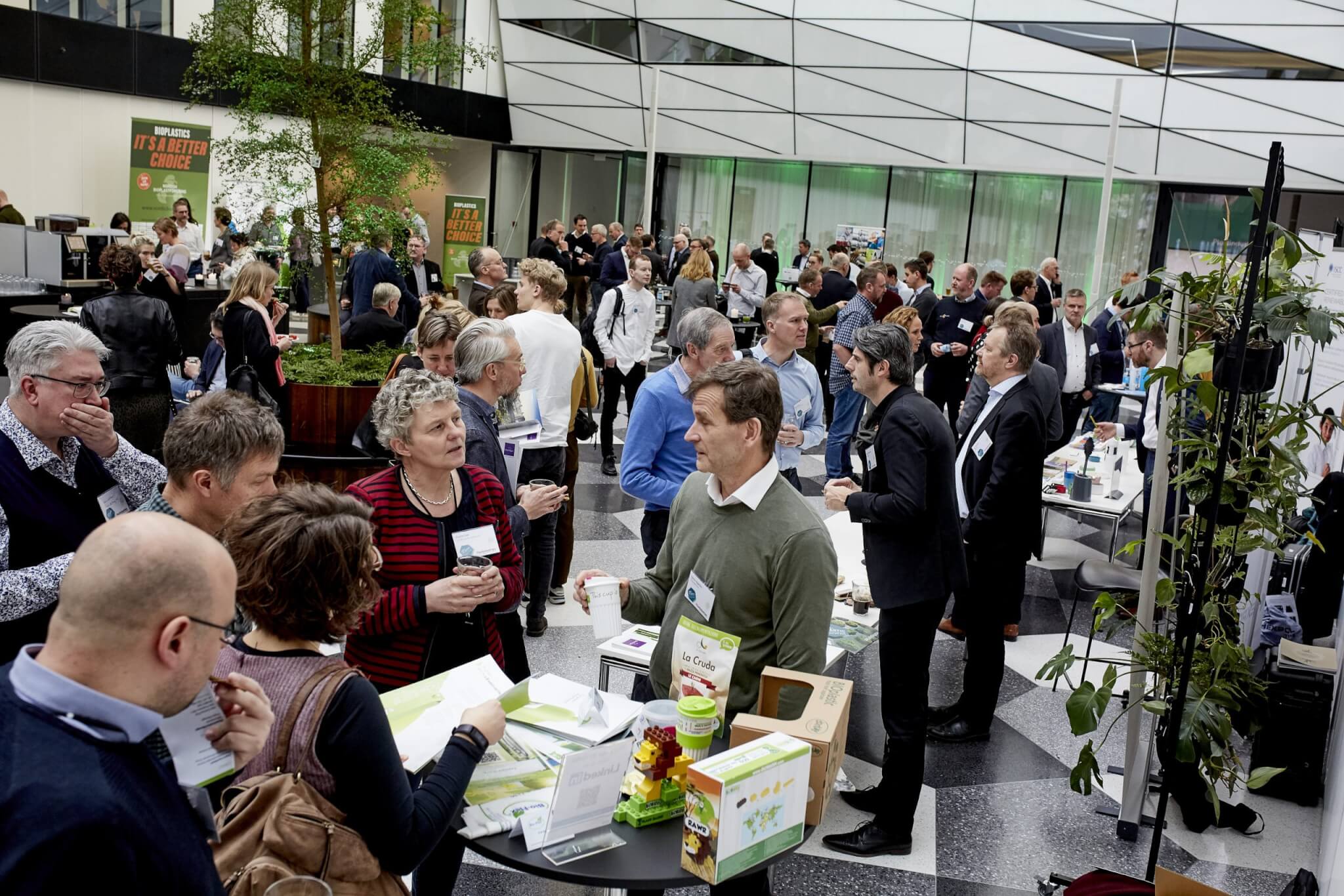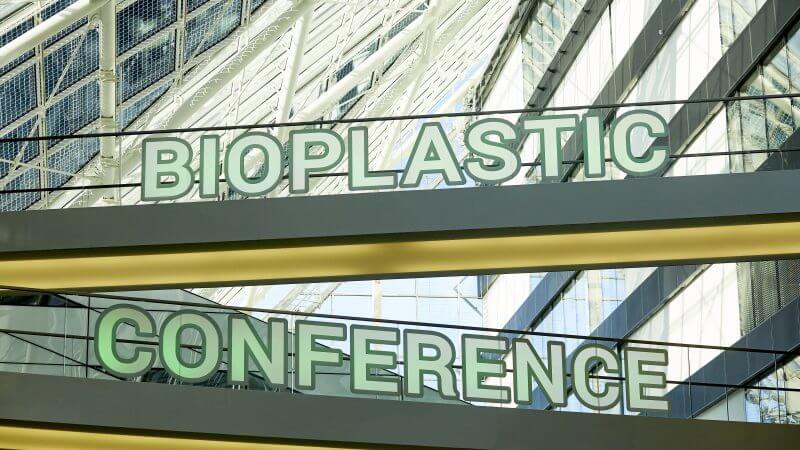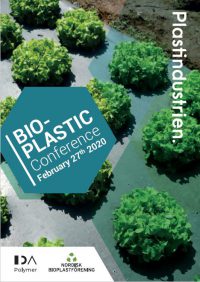Bioplastic Conference 2020 aimed to gather the industry to update everybody on what is possible with biobased plastic materials and the state of the biodegradable materials. See presentations and pictures from the sold out event here.
Together with IDA Polymer, Nordisk Bioplastforening and Technological Institute we successfully hosted the Bioplastic Conference 2020 on Thursday of last week.
The sold-out conference was packed with 300 enthusiastic bioplastic delegates filling up the entire space of the conference hall in Industriens Hus.
The aim was to gather the industry and the newest bioplastic knowledge in order to get updated insights in the possibilities and obstacles – with a focus on both biobased and biodegradable plastic materials.
The conference was structured around cases from the industry combined with a market- and application overview as well as input from policymakers, consultants and other experts.
The full program can be found here: Bioplastic Conference 2020.
What is bioplastic?
Bioplastic is a term used to describe a broad range of plastic materials that are either biodegradable, derived from renewable resources or both. This often leads to a bit of confusion regarding bioplastic materials and their properties.
The first speaker of the day was Hasso von Pogrell from the organisation European Bioplastics, who shed some light on the topic by elaborating on the different material types that the term bioplastics cover.
- Biobased and biodegradable plastics: Are plastics made by using renewable resources, such as biomass (corn, wheat, potatoes etc.), and will biodegrade under certain conditions. These materials are often used for disposable items, such as packaging, drinking bottles, single-use food containers and cutlery.
- Bio-based and non-biodegradable bioplastics: These materials are made using renewable resources as well, however they are designed to be more durable and have a longer life span. These materials are often used to replace metal components in e.g. vehicles and has the advantage of reducing vehicle weight, which increases fuel efficiency.

It is important to emphasize that just because a material is biobased it doesn’t necessarily mean that it is biodegradable.
During Hasso von Pogrells presentation, he addressed bioplastics often faces the challenge that there are several myths concerning the material group, myths as; bioplastic will ruin mechanical recycling and bioplastic will end up as micro-plastic in the nature. Several of the speakers addressed these myths and gave their opinion on the topic.
Recycling: Sorting matters
Not all biodegradable products are suitable for composting. Philippe Dewolfs from the certification body TÜV Austria gave a thorough presentation on the international standards for products to be labelled compostable, which includes the composting conditions such as time, temperature and the environmental effects of the final compost.
At places where industrial composting facilities are not available, the compostable bioplastic products are likely to contaminate other plastic waste streams. For this reason, waste sorting still has an important role in recycling of bioplastics, he argued.

Many of the bioplastics can successfully be recycled into new plastic materials at the end of their life. However, just as conventional plastics have to be sorted into different categories to optimise the recycling, so does bioplastics. Mixing the different plastics can reduce the performance and the life span of the recycled product.
Table-top exhibitions and networking
Among the many presentations were a series of short introductions to a group of companies that held table-top exhibitions just outside the main conference hall. At the table-top exhibitions the many conference guests were shown a wide variety of different biobased and biodegradable products, such as toys made of bioplastic, biodegradeable film and different types of packaging.

The table-top exhibitions also provided the many conference guests with a great opportunity to network with each other and the many exhibitors.
Whether the bioplastics are the polymers of the future is still uncertain, however it is definitley an interesting topic that demands much more attention, which is why the conference will be followed by a similar conference next year.
Would you like to learn more about the future of sustainable polymers?
Did the conference make you want to know more about topics like mass balance, chemical recycling, carbon management and other topics relating to future polymer feedstock and ways towards sustainability?
Then our next conference might be interesting for you: The Danish Plastic Federation is hosting a conference on Chemical Recycling on March 25th. At the conference chemical recycling of thermoplastic packaging, PET, composites, polyurethanes etc. will be discussed.
Download the program:
Download the presentations:
- Hasso von Pogrell: What is bioplastic? – Is bioplastic the answer?
- Asbjørn Børsting: Sustainable building blocks for the future – recommendations on materials for packaging, textiles and products with a long time span
- Philippe Dewolfs: From certification to communication – The role of a certification body
- Morten Brøgger Kristensen: SOLUM on composting of bioplastics in Denmark
- Jesper Skovby Jørgensen: Scenarios for waste management of biobased and biodegradable plastics products, including possibilities for recycling, composting or other biological treatment after end use
- Christoffer Bergmann: Increased use of black plastic can help the environment
- Martin David Rangel Clemesha: Braskem I’m green™ Making people’s life better today and for generations to come
- Edvard Hall: A platform technology to produce microfibers from feathers and PHAs – a biobased and biodegradeable plastic
- Sune Holm: Renewable PP/PE from discarded frying oil
- Marc Thometchek: Biodegradeable compounds with a matching look
- Klas Dannäs: Soft plastics from plants – Renewable & Recyclable
- Mikko Olvai Långström: Biodegradeable and compostable polymers from renewable sources
- Dan Andersson: New Natural Polymer at IMCD Advanced Materials
- Lars Börger: Neste accelerating circulariuty with renewable and recycled solutions for plastics: Bio-PP and beyond
- Bart Van Hoof: SABIC’s certified renewable polymers; a TRUCIRCLE™ initiative
- Ksenija Garbacenka: Towards a sustainable future for packaging design and materials
- Katharina Schlegel: New packaging applications
- Tuomo Wall: UPM Raflatac Forest Film™ self-adhesive labels: Imagine plastic from the forest
- Rebekka Lortenzen Storgaard: Towards a fossil free packaging future
- Martin Lidstrand: Ready to use granulates for injection moulding made from hemp
- Eike Langenberg: Renewable • Reusable • Recyclable – Bioplastics as part of the circular economy
- Bo Madsen: Bio4Self – Bio-based and biodegradable self-reinforced composites
- Jesper Bøgelund: The Role of Bioplastics in Our Journey Towards Zero Environmental Impact
Pictures from the conference:
Fotograf: Pelle Rink
Want know more about bioplastics?
If you want to receive information about this conference sign up below.
If you have ideas for content or format, want to present or showcase, get in touch with us.
Sign me up for news and events on bioplastics


